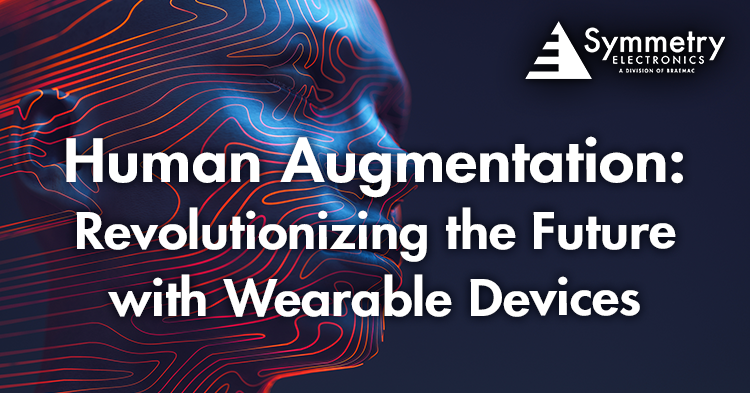- Home
- Symmetry Blog
- Human Augmentation: Revolutionizing the Future with Wearable Devices
Human Augmentation: Revolutionizing the Future with Wearable Devices
About Savannah Cuthbert

Human augmentation is an exciting frontier in technology, blending the physical and digital worlds to enhance human capabilities. For IoT engineers, this field offers a wide range of opportunities to innovate and create devices that can significantly improve quality of life. In this article, we will cover what human augmentation is, its benefits, key use cases, and the market potential for developing augmentation devices.
What is Human Augmentation?
Human augmentation refers to technologies that enhance human abilities through artificial means. This can range from wearable devices that monitor health to advanced prosthetics that restore lost functions. The goal is to extend human capabilities beyond natural limits, leveraging advancements in fields like augmented reality (AR) and machine learning (ML).
Benefits of Human Augmentation
Enhanced Physical Abilities: Devices such as exoskeletons can increase strength and endurance, aiding in both industrial applications and personal mobility.
Improved Health Monitoring: Wearable devices can continuously monitor vital signs, providing real-time health data and early detection of potential issues.
Restored Functions: Advanced prosthetics and implants can restore lost functions, significantly improving the quality of life for individuals with disabilities.
Cognitive Enhancement: Augmented reality and brain-computer interfaces can enhance cognitive functions, aiding in learning and productivity.
Healthcare:
- Wearable devices and medical implants can monitor and manage chronic conditions, provide real-time health data, and administer treatments.
Industrial Applications:
- Exoskeletons and AR glasses can improve worker safety and efficiency in manufacturing and construction.
Military and Defense:
- Augmentation devices can enhance soldiers’ physical and cognitive abilities, improving performance and safety in the field.
Consumer Electronics:
- Smart glasses and other wearable devices can provide seamless integration of digital information into daily life, enhancing convenience and productivity.c



Market Potential
The market for human augmentation technologies is rapidly growing, driven by advancements in IoT, machine learning, and medical devices. According to Grand View Research, the global human augmentation market is expected to reach approximately $739.59 billion by 2030.

Technological Advancements: Continuous improvements in sensors, connectivity, and data analytics are making augmentation devices more effective and accessible.
Increasing Demand for Wearable Devices: As consumers become more health-conscious and tech-savvy, the demand for wearable health monitors and fitness trackers is surging.
Aging Population: With an increasing number of elderly individuals, there is a growing need for devices that can assist with mobility, health monitoring, and daily activities.
Investment in R&D: Significant investments in research and development are leading to innovative products and solutions in the human augmentation space.
Developing Devices for Human Augmentation
For IoT engineers looking to enter the human augmentation market, there are several key considerations:
User-Centric Design: Devices must be designed with the end-user in mind, ensuring comfort, usability, and accessibility.
Data Security & Privacy: With the collection of sensitive health data, ensuring robust security and privacy measures is crucial.
Interoperability: Augmentation devices should be compatible with existing systems and platforms to provide seamless integration and functionality.
Regulatory Compliance: Navigating the regulatory landscape is essential, particularly for medical devices that require approval from health authorities
